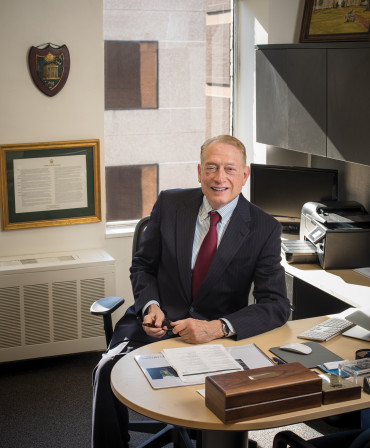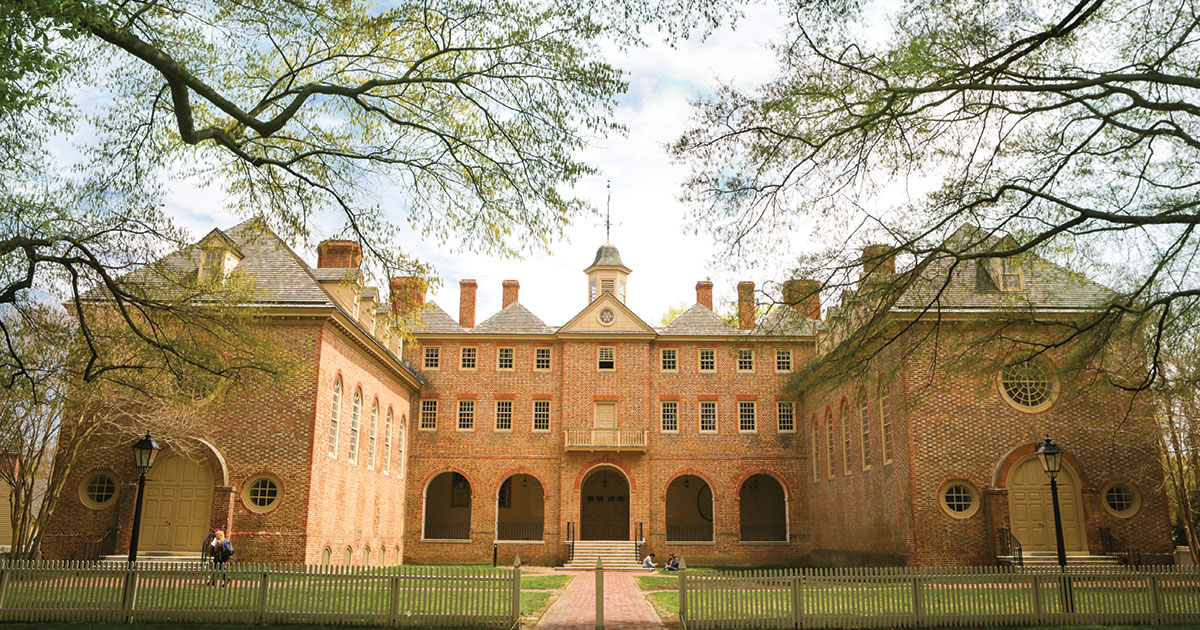A Decade of Leadership: Reflections on W&M's 27th president

Photo by Keith Lanpher
The Gale is featuring a series of blog posts from distinguished alumni and friends reflecting on Taylor Reveley’s leadership over the past decade. This week, former university Rector Jeff Trammell '73, offers his own reflection on Taylor’s legacy as William & Mary’s 27th president.
 In 2008, during my first term on the W&M Board of Visitors, then Rector Michael Powell '85, D.P.S. '02, asked me to help develop a strategic plan for William & Mary. The existing plan was decades old and somewhat irrelevant to the current operation of the university. About the same time Taylor Reveley had agreed to move from dean of William & Mary Law School to become acting president.
In 2008, during my first term on the W&M Board of Visitors, then Rector Michael Powell '85, D.P.S. '02, asked me to help develop a strategic plan for William & Mary. The existing plan was decades old and somewhat irrelevant to the current operation of the university. About the same time Taylor Reveley had agreed to move from dean of William & Mary Law School to become acting president.
When I joined him for lunch in the President’s House, we talked about what needed to be included in the strategic plan. As we both peered through the centuries old wavy glass window on to the Wren Yard, he suddenly remarked, “Jeff, you know our biggest enemy is the status quo.” While I agreed wholeheartedly, the incongruity of that observation amidst such trappings of the status quo was more than a little amusing.
In a flash, Taylor had grasped the outline of the bold plan – what would be required to help William & Mary live up to its potential – to create a financial base and academics that would drive and sustain the best public liberal arts university in the nation. But it took some adjusting for the board to master his resonant drollery and occasional classical allusions.
As he would come to say so many times that the board members could move their lips and repeat the words with him, “we have the great challenge of Sisyphus before us. But whereas Sisyphus only had to roll one boulder up the hill, we must roll three up the hill simultaneously!” But as he so often elaborated, if we roll those boulders up the hill, we will solidify William & Mary’s future in breathtaking ways. While this strategic planning process was driven by dedicated board members, faculty, administration, alumni and students, it was Taylor’s vision that overlaid it and gave it form.
I would be remiss not to mention the “as it is done at Princeton” problem. You see, Taylor not only is an alumnus of Princeton but he served as a trustee there for many years. And when he kept referencing the success of Princeton during our planning process, our Board of Visitors finally had to threaten to require that he give W&M $100 every time he said the word Princeton.
As W&M’s strategic plan was developed and went through a number of refinements, Taylor’s Moses-like admonition was constant. We must focus like a laser on securing our future by making sure we are as efficient and productive as possible; build private support commensurate with the reputation and quality of William & Mary; and we must charge tuition closer to the value of the education we provide, with significant need-based financial aid to help middle- and low-income families.
When we incorporated these Sisyphus boulders into the William & Mary Promise and formally adopted this operating system at the spring 2013 Board of Visitors meeting, a significant stride had been taken to secure future William & Mary’s future. Taylor, incoming Rector Todd Stottlemyer ‘85 and I, as the sitting Rector, walked over to the Wren and took turns enthusiastically ringing the bell, as it had been rung on other historic moments in the long life of William & Mary.
Taylor’s dry monotone discussions of Sisyphus’ boulders had inspired us to put William & Mary’s 325-year-old shoulder to those boulders and amazingly they moved up the hill.
In the years since, as I have participated in seminars with university trustees from around the country and listened to the challenges of presidential leadership at their institutions, I am reminded how fortunate I was that for my tenure as Rector and most of my time on the Board of Visitors, I got to work with that thoughtful leader who inspired William & Mary to pursue sustained excellence. Yes, he looked like a university president and frequently he even sounded like one, but his thought process was all his own, much to the betterment of William & Mary’s future.

